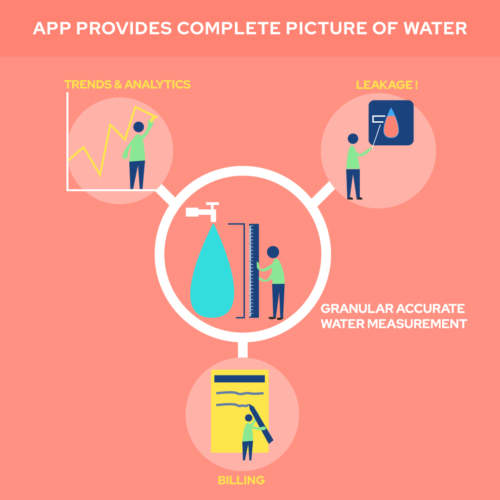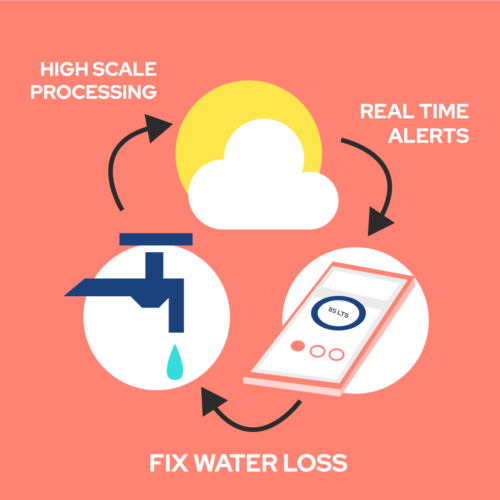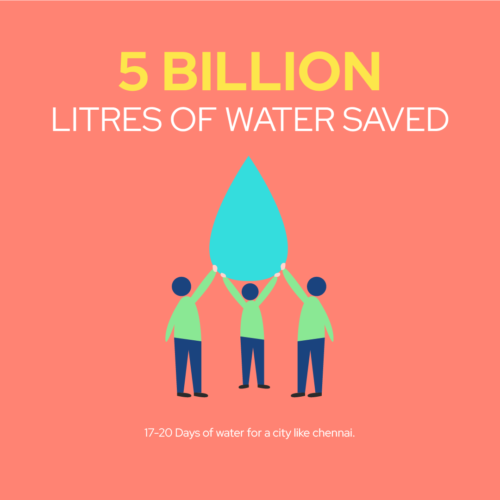If it truly matters to you, if it is the foundation of your life, chances are you will never think about it.
Abilash Haridass and VijayRam Harinathan were featured in an episode of Fix This! by AWS – a podcast, exploring tech ideas and solutions to some of today’s largest challenges. They spoke about water – a resource so important to our daily lives that, so long as we have regular access to it, we take it completely for granted.
But as cities grow, so too does the demand for water. This increased demand, paired with climate change, can exacerbate water scarcity and impact people’s access to clean water.
When water is so scarce, you need that baseline, you need as much information as possible to start making better decisions.
“If I were to ask you what was your consumption today – how many liters did you use in the shower or how many liters in the kitchen – you do not have that information, right?”, says Abilash Haridass.
WEGoT works on the belief that data-driven insights on water consumption patterns will drive more sustainable water management.
Here are excerpts from the conversation
WEGoT aqua is an IoT-enabled solution which means there are 2 parts to the system –
1. A device that collects data
2. A platform that takes this data and gives you real-time insights
Device
The device is a high-precision ultrasonic sensor inspired by the great white whale. It’s a hat tip to the idea that we are pursuing a difficult objective relentlessly and obsessively. It can measure water with a >98% accuracy at a one-drop level and is manufactured in-house so that it can be fitted on a variety of pipe widths. The sensor can measure water at the source and at consumption points.
But why does this solution have to be very precise?
Why does it have to measure water at a very granular level?
Fundamentally, if someone is paying for a solution, there is very little margin for error. Without accuracy, the entire lifecycle of using the system breaks down. We’ve got certified by government agencies. This gives confidence to users that whatever we measure is accurate and therefore they can go ahead and pay for it.
Platform
The platform that delivers the data from the sensor has 2 user interfaces – a mobile app and a web application. Between these two, we cover all the different stakeholders on campus – from the individual consumer of water to the person managing the facility. It also helps senior management in commercial buildings or industries or your Chief Sustainability Officer make better decisions across campuses. Everyone gets access to accurate, granular water data.
How does this help?
We can manifest water data at every level. You can look at the water for the entire site, or all the way down to a single sensor that’s instrumented, in the kitchen or cafeteria.

Billing: The same information can be repurposed for billing because the moment you start measuring water, you want to rationalize the cost. You pay for what you use. For residential customers, the same information is fed to a billing engine to generate bills specific to their consumption.
Leakage alerts: Patterns of usage help us identify whether they’re experiencing a leakage. The app alerts the consumer in these circumstances.
Trends and Analytics: If you’re a more savvy user, you also get into the trends of consumption and compare your own consumption in your kitchen or master bathrooms and try and compare them over time periods.
Essentially, the app in your hand provides the complete picture of the water usage and alarms to ensure that your bills and your consumption stay healthy.
IoT
How is the cloud helping to power WEGoT aqua? IoT is really a no-brainer solution for utilities. The speed and the scale we need for metering water… IoT is the way to go.

Scale: Today we ingest about 25 million data points from our sensors and IoT plays a key role in sending this processed small footprint data to us. We are on the AWS cloud and serverless processing makes the ingestion seamless. This is crucial for helping us scale. We can put as many sensors as we want in the field. The cloud also really helps us assimilate data and quickly lend the information in such a way that we are able to provide domain-specific functions.
Speed: For instance, everybody wants to know about non-revenue water. Where is the leakage coming from? Where is the wastage? It is easy to put this in perspective because we measure water at the sources that come in, and we measure water and the consumption points. We’re able to mash up and provide a picture that they’ve not seen before. It is very apparent where the actual losses in the system are and where the non-revenue water is getting generated.
So I think it’s like a quick toolkit to put together what is necessary for the customer. Obviously, with ML and predictions, the data that we sit on helps the customer to plan for their future. The speed at which we’re able to offer these insights… is near real-time. They’re able to identify any of these exceptions and act on them in a quicker time frame.
This is how cloud-based solutions add value to the users.
Results
All of our metrics are driven by how much water we can save. We have saved 5 billion litres of water in the last 7 years. In context, this means 17-20 days of water for a city like Chennai.

We are scaling right now and we hope to save and bring this number up from 3 billion to 10 billion this year. We hope that in the next three to five years we will be at maybe 100 billion litres.
We are expanding our footprint to urban centres in India. But we also know that this has potential in all the other rapidly growing and densely populated cities. We are in conversation with partners as well for taking a solution outside India.
The complete podcast is available here
